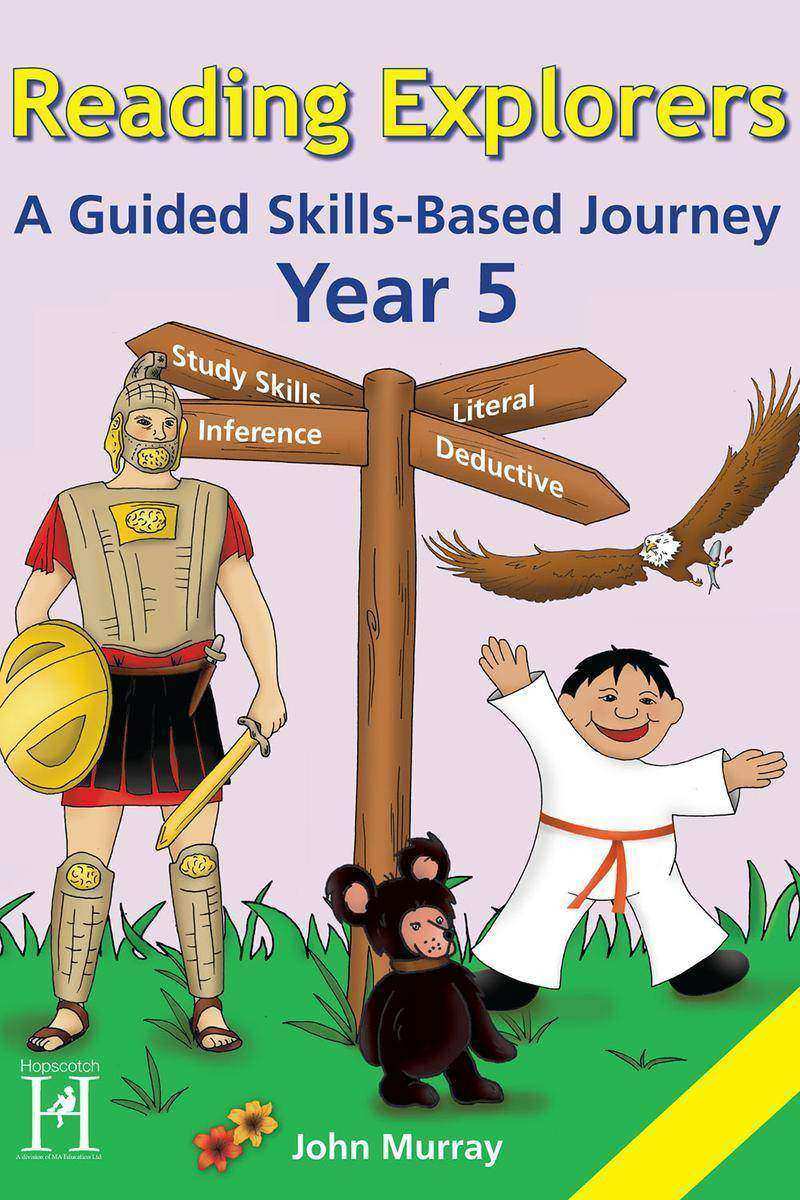
Reading Explorers Year 5
¥215.72
Reading Explorers Year 5
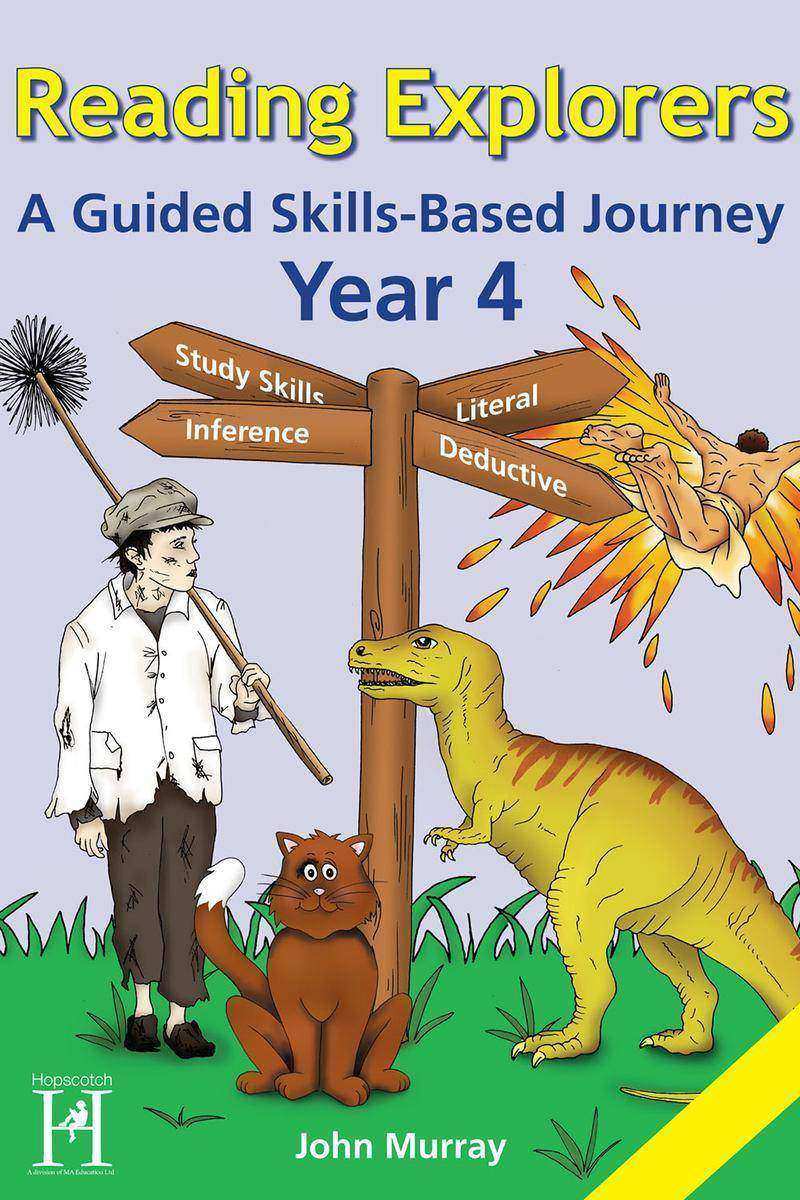
Reading Explorers Year 4
¥215.72
A Guided Skills-Based Journey is a series of books aimed at developing key reading and study skills. This brilliant new series provides teachers with a wide variety of genres, both fiction and non-fiction, which will allow children to access, interpret and understand what they are reading. It increases the child's knowledge and understanding of why certain words are chosen by an author. It gives the reader the chance to speculate on the tone and purpose of the texts, as well as consider both the texts' themes and audience.
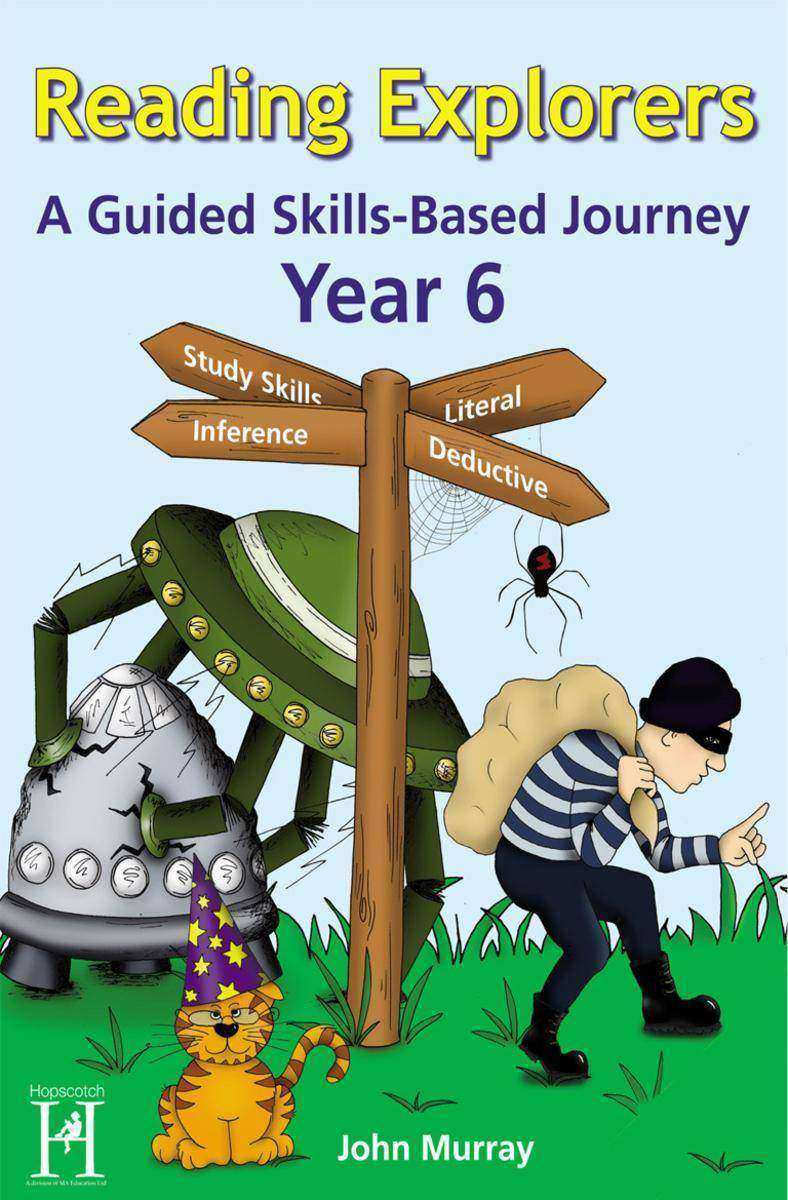
Reading Explorers Year 6
¥215.72
A Guided Skills-Based Journey is a series of books aimed at developing key reading and study skills. This brilliant new series provides teachers with a wide variety of genres, both fiction and non-fiction, which will allow children to access, interpret and understand what they are reading. It increases the child's knowledge and understanding of why certain words are chosen by an author. It gives the reader the chance to speculate on the tone and purpose of the texts, as well as consider both the texts' themes and audience.
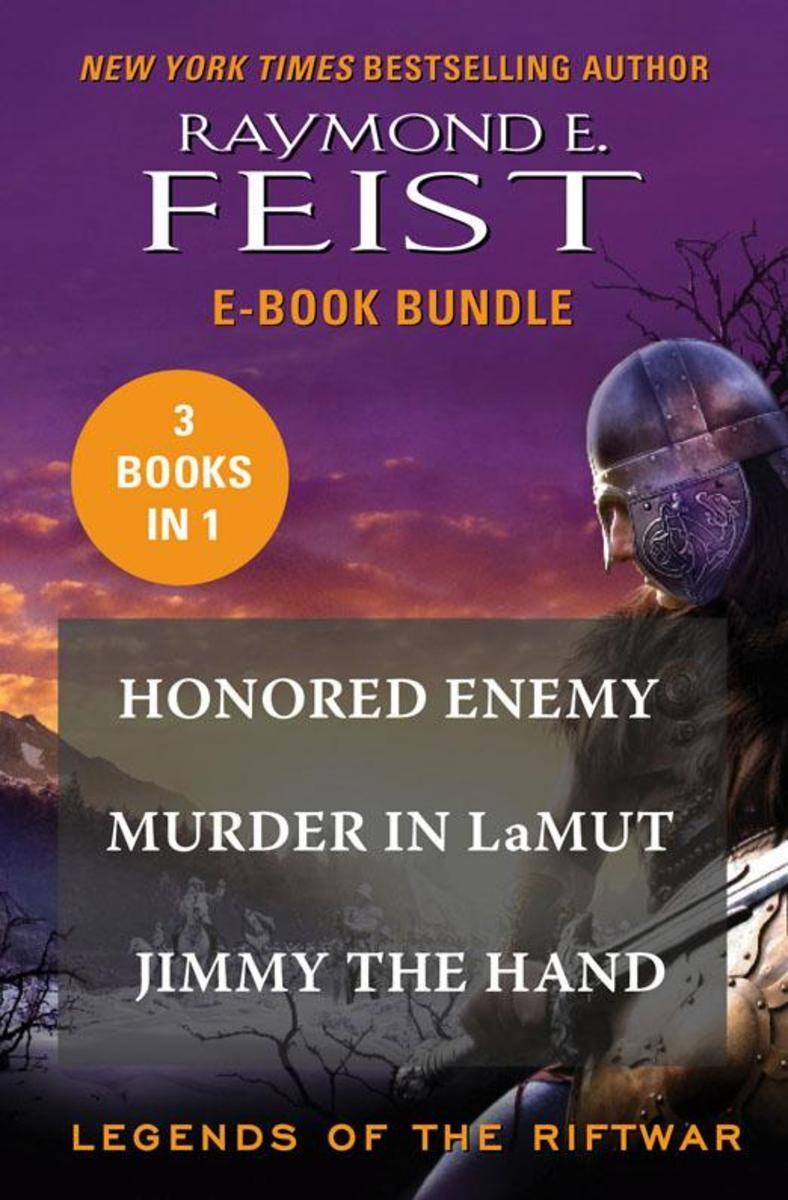
The Legends of the Riftwar
¥215.70
Get all three fantasy novels in?New York Times?bestselling author Raymond E. Feist's?the Legends of the Riftwar series in one e-book, including:?Honored Enemy,?Murder in LaMut, and?Jimmy the Hand.?A part of the larger Riftwar Cycle of Raymond Feist, the exceptional Legends of the Riftwar series gives insight into events during key parts of the Riftwar.

The Hero's Guide Complete Collection
¥215.70
In the Hero's Guide books, readers discover that Prince Charming isn't one man—there are four of them: Liam, Frederick, Duncan, and Gustav. And they all have their own challenges to overcome as they try to grow from goofy, average-guy princes into impossibly perfect knights of legend. Joined by princesses Ella, Snow White, Briar Rose, Rapunzel, and Lila, they're off on adventures that they—and their kingdoms—can only hope to survive. Tween fans of Shrek and How to Train Your Dragon will love this fast-paced, funny series that's been applauded by the LA Times, the New York Times, Publishers Weekly, and Kirkus Reviews.This collection includes:The Hero’s Guide to Saving Your Kingdom The Hero’s Guide to Storming the Castle The Hero’s Guide to Being an Outlaw

American Wine
¥213.06
The incomparable Anthony Dias Blue the world's leading expert on American wine has revised and updated his definitive reference on America's wine-producing regions and wines. Both entertaining and informative American Wine takes the risk out of choosing the best wines and the best values with maps, winery profiles, comprehensive tasting notes, ratings, and recommendations on more than 5,000 wines.Anthony Dias Blue is universally praised for his unpretentious wine prose often witty and always thoroughly original and for the authoritativeness and strength of his opinions. American Wine sparkles with the same spirit and sharp critical perspective that make his newspaper and magazine columns and radio segments so popular. Blue introduces the reader to the wealth of American wines and wineries from their beginnings to the present and gives background on American grapes, wine production techniques, and his amusing hypotheses on primitive man's discovery of wine.The heart of the book is the comprehensive listing, arranged by region, of more than 900 wineries, each including a de*ion of the owners/founders, and a list of important characteristics, including vintage, type, and price, of all the wines produced by the winery. Thorough de*ions of each wine are provided as well as guidelines as to when the wines are ready. Individual wines are given quality ratings; Blue's rating system is easy to use and clearly highlights special bargains.With the seasoned eye and palate that years of experience have given him, Blue has researched and written this compendium with gusto, and the first edition of American Wine has been a resounding success. Updated and revised, this volume is indispensable to anyone how buys wine.

How Governments And Other Stakeholders
¥212.47
How Governments And Other Stakeholders
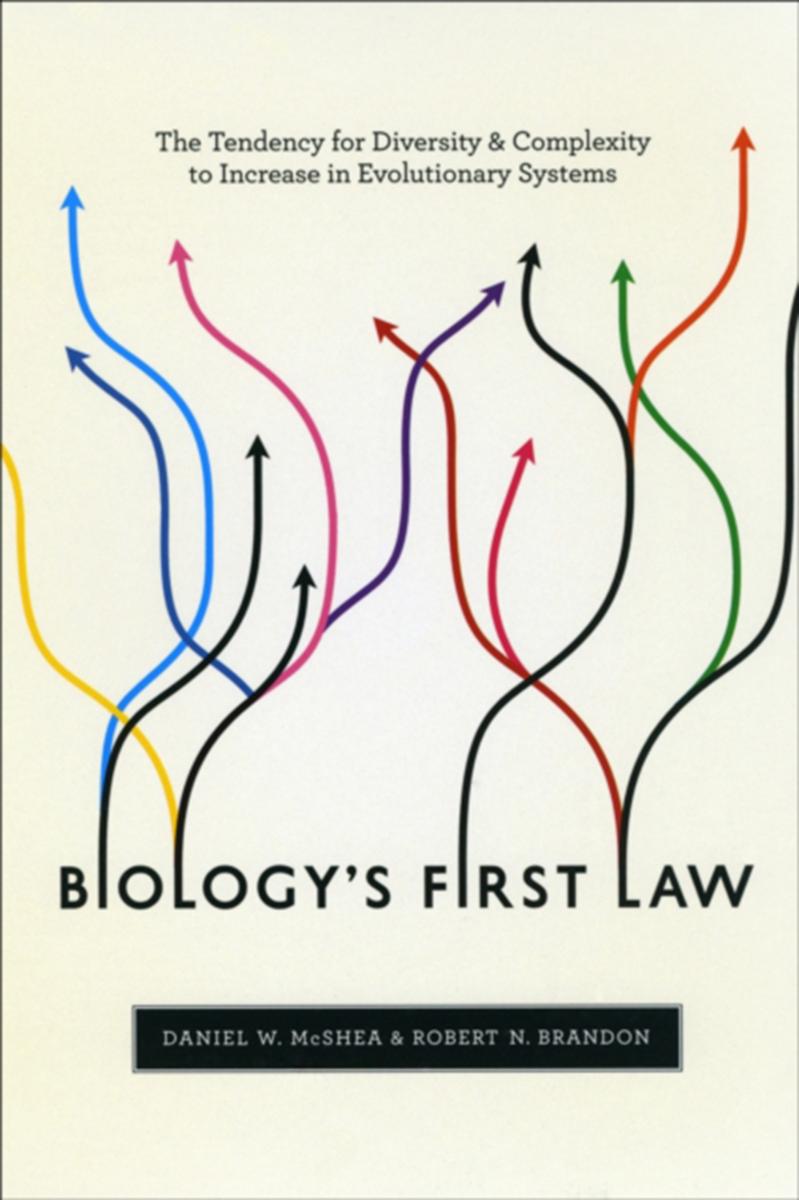
Biology's First Law
¥211.90
So certain is this that we may boldly state that it is absurd for human beings even to attempt it, or to hope that perhaps some day another Newton might arise who would explain to us, in terms of natural laws unordered by intention, how even a mere blade of grass is produced.Kant, Critique of Judgment (1790)
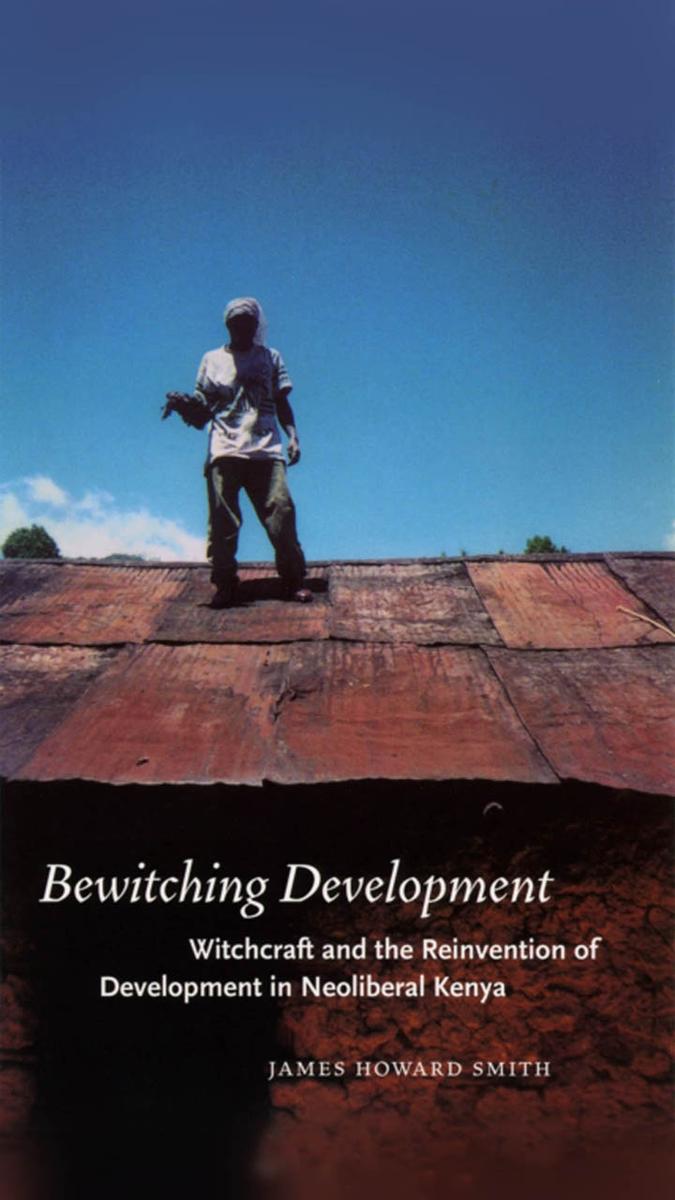
Bewitching Development
¥211.90
These days, development inspires scant trust in the West. For critics who condemn centralized efforts to plan African societies as latter day imperialism,?such plans?too closely reflect their roots in colonial rule and neoliberal economics. But proponents of this pessimistic view often ignore how significant this concept has become for Africans themselves. In Bewitching Development, James Howard Smith presents a close ethnographic account of how people in the Taita Hills of Kenya have appropriated and made sense of development thought and practice, focusing on the complex ways that development connects with changing understandings of witchcraft.Similar to magic, development's promise of a better world elicits both hope and suspicion from Wataita. Smith shows that the unforeseen changes wrought by development-greater wealth for some, dashed hopes for many more-foster moral debates that Taita people express in occult terms. By carefully chronicling the beliefs and actions of this diverse community-from frustrated youths to nostalgic seniors, duplicitous preachers to thought-provoking witch doctors-BewitchingDevelopment vividly depicts the social life of formerly foreign ideas and practices in postcolonial Africa.
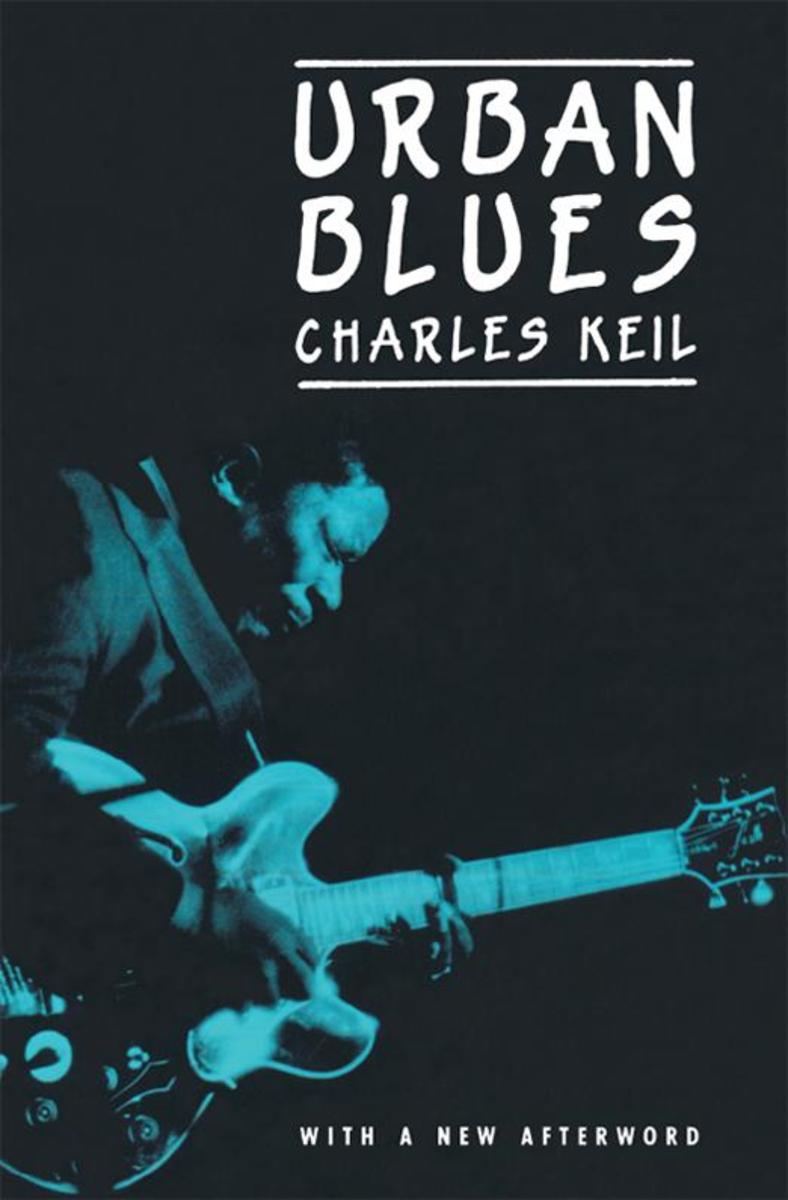
Urban Blues
¥211.90
Charles Keil examines the expressive role of blues bands and performers and stresses the intense interaction between performer and audience. Profiling bluesmen Bobby Bland and B. B. King, Keil argues that they are symbols for the black community, embodying important attitudes and roles-success, strong egos, and close ties to the community. While writing Urban Blues in the mid-1960s, Keil optimistically saw this cultural expression as contributing to the rising tide of raised political consciousness in Afro-America. His new Afterword examines black music in the context of capitalism and black culture in the context of worldwide trends toward diversification."e;Enlightening. . . . [Keil] has given a provocative indication of the role of the blues singer as a focal point of ghetto community expression."e;-John S. Wilson, New York Times Book Review"e;A terribly valuable book and a powerful one. . . . Keil is an original thinker and . . . has offered us a major breakthrough."e;-Studs Terkel, Chicago Tribune"e;[Urban Blues] expresses authentic concern for people who are coming to realize that their past was . . . the source of meaningful cultural values."e;-Atlantic"e;An achievement of the first magnitude. . . . He opens our eyes and introduces a world of amazingly complex musical happening."e;-Robert Farris Thompson, Ethnomusicology?"e;[Keil's] vigorous, aggressive scholarship, lucid style and sparkling analysis stimulate the challenge. Valuable insights come from treating urban blues as artistic communication."e;-James A. Bonar, Boston Herald?
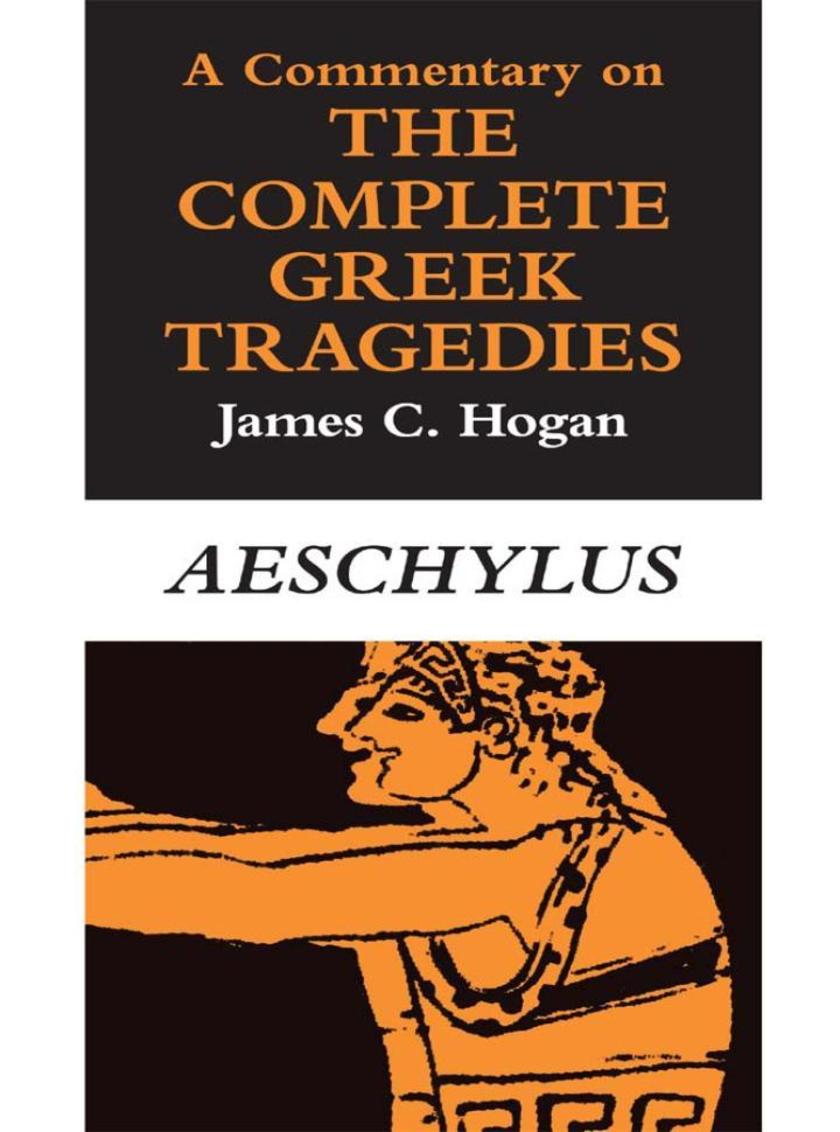
Commentary on The Complete Greek Tragedies. Aeschylus
¥211.90
This commentary offers a rich introduction and useful guide to the seven surviving plays attributed to Aeschylus. Though it may profitably be used with any translation of Aeschylus, the commentary is based on the acclaimed Chicago translations, The Complete Greek Tragedies, edited by David Grene and Richmond Lattimore.James C. Hogan provides a general introduction to Aeschylean theater and drama, followed by a line-by-line commentary on each of the seven plays. He places Aeschylus in the historical, cultural, and religious context of fifth-century Athens, showing how the action and metaphor of Aeschylean theater can be illuminated by information on Athenian law athletic contests, relations with neighboring states, beliefs about the underworld, and countless other details of Hellenic life. Hogan clarifies terms that might puzzle modern readers, such as place names and mythological references, and gives special attention to textual and linguistic issues: controversial questions of interpretation; difficult or significant Greek words; use of style, rhetoric, and commonplaces in Greek poetry; and Aeschylus's place in the poetic tradition of Homer, Hesiod, and the elegiac poets. Practical information on staging and production is also included, as are maps and illustrations, a bibliography, indexes, and extensive cross-references between the seven plays. Forthcoming volumes will cover the works of Sophocles and Euripides.
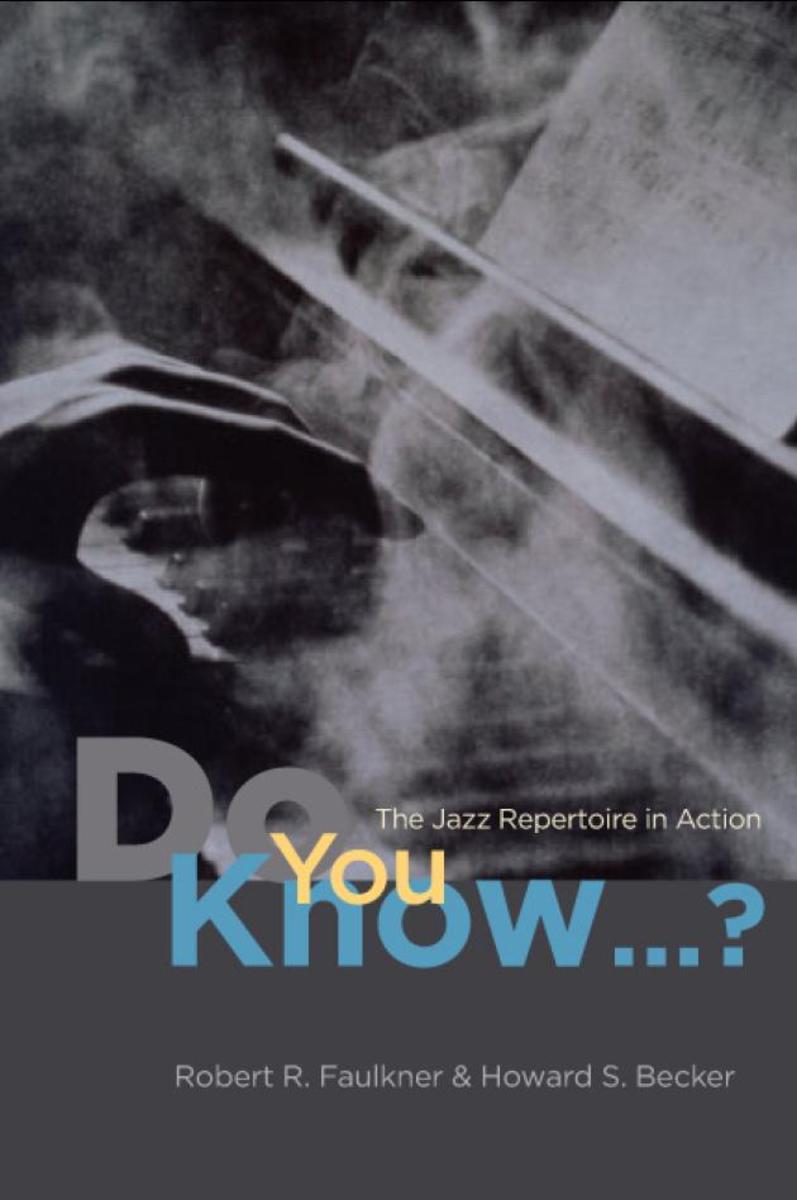
"e;Do You Know...?"e;
¥211.90
Every night, somewhere in the world, three or four musicians will climb on stage together. Whether the gig is at a jazz club, a bar, or a bar mitzvah, the performance never begins with a note, but with a question. The trumpet player might turn to the bassist and ask, "e;Do you know 'Body and Soul'?"e;-and from there the subtle craft of playing the jazz repertoire is tested in front of a live audience. These ordinary musicians may never have played together-they may never have met-so how do they smoothly put on a show without getting booed offstage.In "e;Do You Know . . . ?"e; Robert R. Faulkner and Howard S. Becker-both jazz musicians with decades of experience performing-present the view from the bandstand, revealing the array of skills necessary for working musicians to do their jobs. While learning songs from sheet music or by ear helps, the jobbing musician's lexicon is dauntingly massive: hundreds of thousands of tunes from jazz classics and pop standards to more exotic fare. Since it is impossible for anyone to memorize all of these songs, Faulkner and Becker show that musicians collectively negotiate and improvise their way to a successful performance. Players must explore each others' areas of expertise, develop an ability to fake their way through unfamiliar territory, and respond to the unpredictable demands of their audience-whether an unexpected gang of polka fanatics or a tipsy father of the bride with an obscure favorite song."e;Do You Know . . . ?"e; dishes out entertaining stories and sharp insights drawn from the authors' own experiences and observations as well as interviews with a range of musicians. Faulkner and Becker's vivid, detailed portrait of the musician at work holds valuable lessons for anyone who has to think on the spot or under a spotlight.

Wittgenstein's Lectures on the Foundations of Mathematics, Cambridge, 1939
¥211.90
For several terms at Cambridge in 1939, Ludwig Wittgenstein lectured on the philosophical foundations of mathematics. A lecture class taught by Wittgenstein, however, hardly resembled a lecture.He sat on a chair in the middle of the room, with some of the class sitting in chairs, some on the floor. He never used notes. He paused frequently, sometimes for several minutes, while he puzzled out a problem. He often asked his listeners questions and reacted to their replies. Many meetings were largely conversation.These lectures were attended by, among others, D. A. T. Gasking, J. N. Findlay, Stephen Toulmin, Alan Turing, G. H. von Wright, R. G. Bosanquet, Norman Malcolm, Rush Rhees, and Yorick Smythies. Notes taken by these last four are the basis for the thirty-one lectures in this book.The lectures covered such topics as the nature of mathematics, the distinctions between mathematical and everyday languages, the truth of mathematical propositions, consistency and contradiction in formal systems, the logicism of Frege and Russell, Platonism, identity, negation, and necessary truth. The mathematical examples used are nearly always elementary.
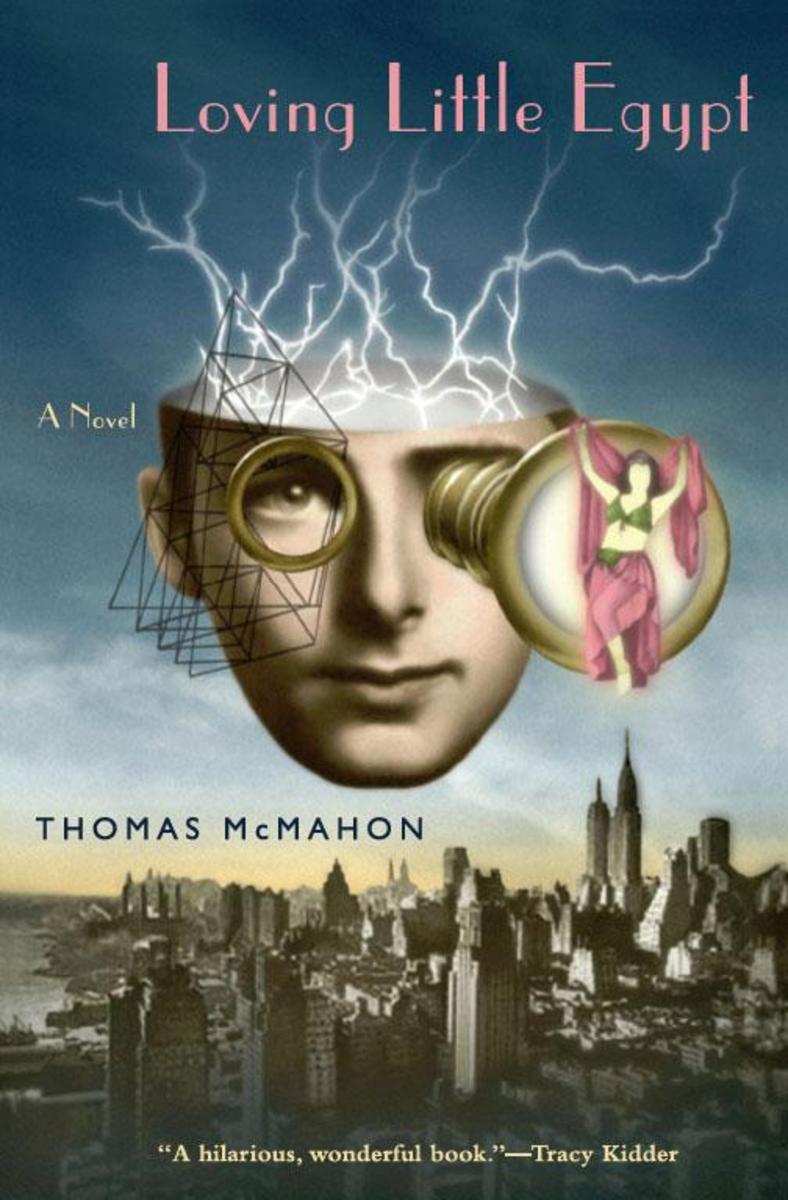
Loving Little Egypt
¥211.90
In the early 1920s, nearly blind physics prodigy Mourly Vold finds out how to tap into the nation's long distance telephone lines. With the help of Alexander Graham Bell, Vold tries to warn the phone companies that would-be saboteurs could do the same thing, but they ignore him. Unfortunately, his taps do catch the notice of William Randolph Hearst, who hires Thomas Edison to get to the bottom of them-and the chase is on!
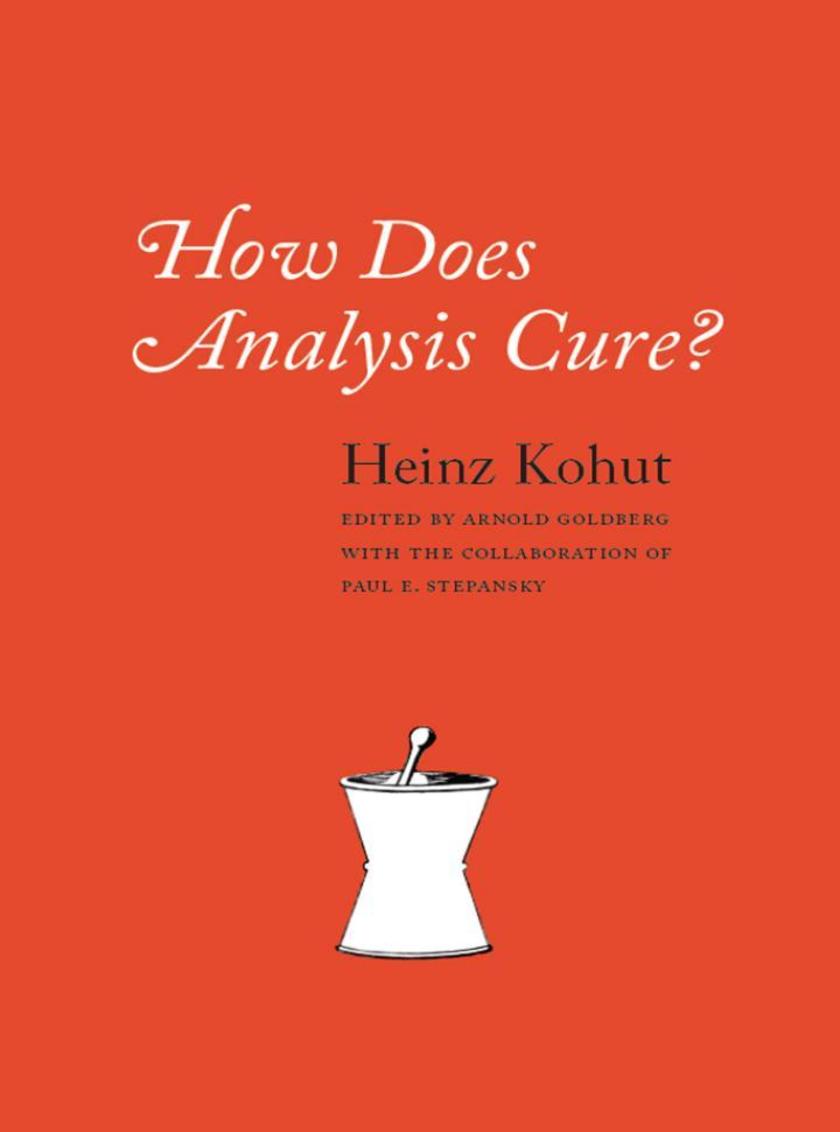
How Does Analysis Cure?
¥211.90
The Austro-American psychoanalyst Heinz Kohut was one of the foremost leaders in his field and developed the school of self-psychology, which sets aside the Freudian explanations for behavior and looks instead at self/object relationships and empathy in order to shed light on human behavior. In How Does Analysis CureKohut presents the theoretical framework for self-psychology, and carefully lays out how the self develops over the course of time. Kohut also specifically defines healthy and unhealthy cases of Oedipal complexes and narcissism, while investigating the nature of analysis itself as treatment for pathologies. This in-depth examination of "e;the talking cure"e; explores the lesser studied phenomena of psychoanalysis, including when it is beneficial for analyses to be left unfinished, and the changing definition of "e;normal."e;An important work for working psychoanalysts, this book is important not only for psychologists, but also for anyone interested in the complex inner workings of the human psyche.
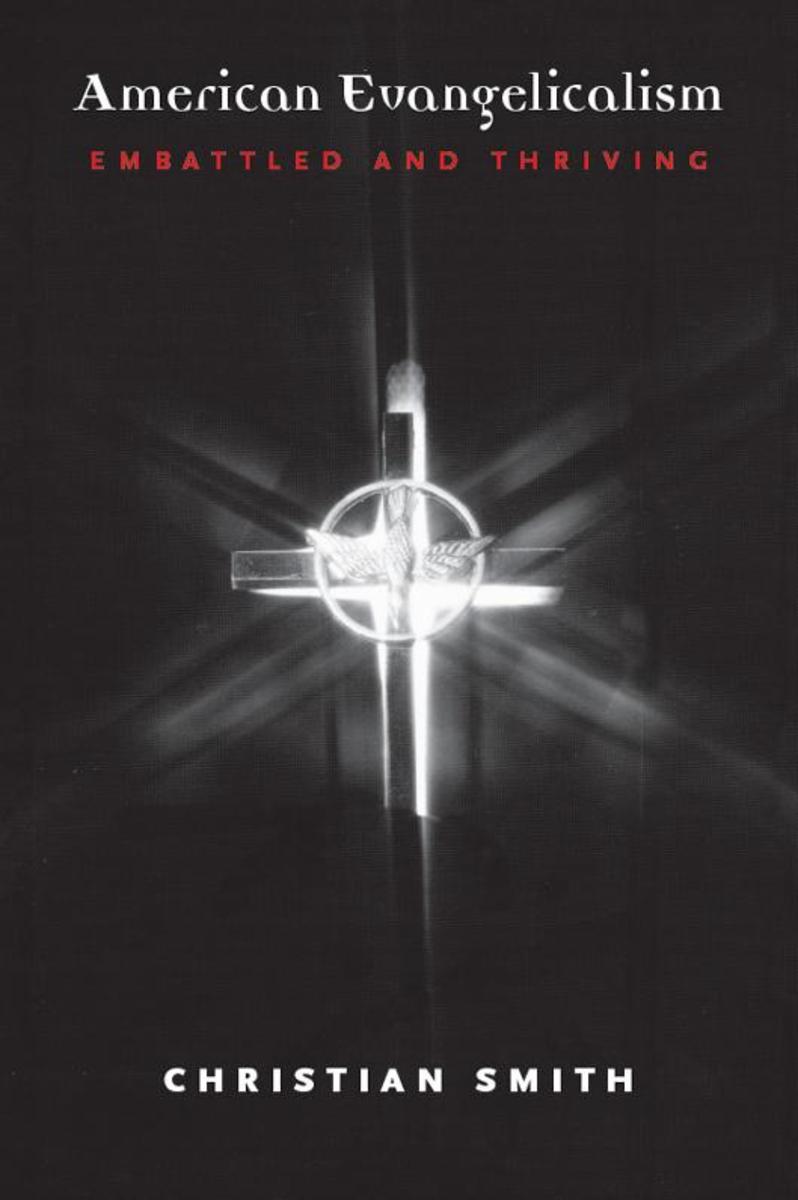
American Evangelicalism
¥211.90
Evangelicalism is one of the strongest religious traditions in America today; 20 million Americans identify themselves with the evangelical movement. Given the modern pluralistic world we live in, why is evangelicalism so popular?Based on a national telephone survey and more than three hundred personal interviews with evangelicals and other churchgoing Protestants, this study provides a detailed analysis of the commitments, beliefs, concerns, and practices of this thriving group. Examining how evangelicals interact with and attempt to influence secular society, this book argues that traditional, orthodox evangelicalism endures not despite, but precisely because of, the challenges and structures of our modern pluralistic environment. This work also looks beyond evangelicalism to explore more broadly the problems of traditional religious belief and practice in the modern world.With its impressive empirical evidence, innovative theory, and substantive conclusions, American Evangelicalism will provoke lively debate over the state of religious practice in contemporary America.

Developmental Editing
¥211.90
This book grew out of an exhibition about Dellinger's life and work that was curated by Bob Mainfort at the Old State House Museum in Little Rock. The book includes a detailed biography of Dellinger, as well as a discussion of his work, an overview of major collecting efforts in Arkansas by out-of-state institutions, and a history of the University of Arkansas Museum. Lavishly illustrated with over two hundred images of artifacts, this book will now permit archaeologists to see some of the pieces Dellinger's lifetime of work saved and preserved.

Nostalgia for the Future
¥211.90
Since the end of the cold war, Africa has seen a dramatic rise in new political and religious phenomena, including an eviscerated privatized state, neoliberal NGOs, Pentecostalism, a resurgence in accusations of witchcraft, a culture of scamming and fraud, and, in some countries, a nearly universal wish to emigrate. Drawing on fieldwork in Togo, Charles Piot suggests that a new biopolitics after state sovereignty is remaking the face of one of the world's poorest regions.In a country where playing the U.S. Department of State's green card lottery is a national pastime and the preponderance of cybercafs and Western Union branches signals a widespread desire to connect to the rest of the world, Nostalgia for the Future makes clear that the cultural and political terrain that underlies postcolonial theory has shifted. In order to map out this new terrain, Piot enters into critical dialogue with a host of important theorists, including Agamben, Hardt and Negri, Deleuze, and Mbembe. The result is a deft interweaving of rich observations of Togolese life with profound insights into the new, globalized world in which that life takes place.
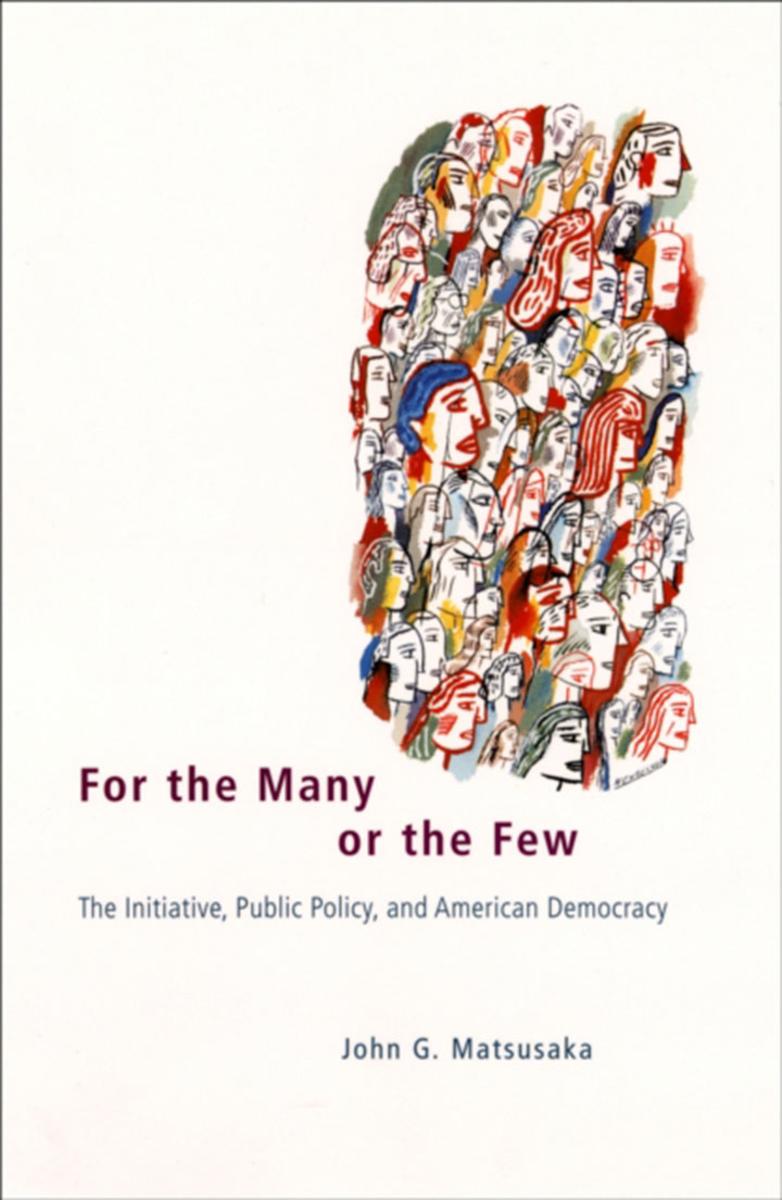
For the Many or the Few
¥211.90
I happen to have spent most of my life in states where citizens have the right to propose and pass laws withoutthe consent of their elected representatives. Most Americans are in the same boat; about 70 percent of us live in a city or state where this option—called the “initiative process”—is available. The polls say people like having this right, and most would even add it to the U.S. Constitution if they could. Yet there has always been an undercurrent of concern about the initiative process, especially about the role of money. Money can place a measure, virtually any measure it seems, on the ballot, and money provides access to the costly media where issues are debated.
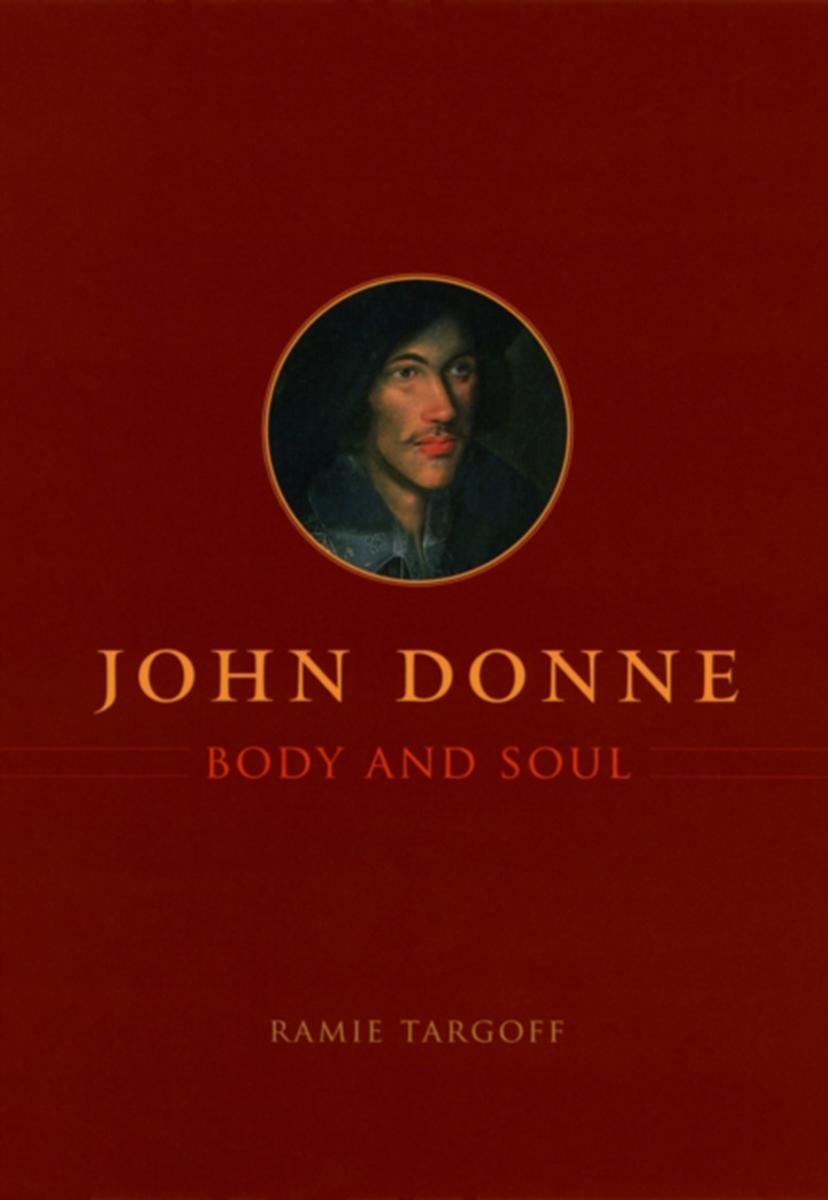
John Donne, Body and Soul
¥211.90
This book began in the Houghton Library at Harvard, where I spent a year reading Donne in his earliest editions and manu*s.The bulk of the book was written while I was a fellow at the Wissenschaftskolleg in Berlin, where I enjoyed the tremendous generosity and intellectual vitality of this fine institution.I want to thank the excellent librarians at the Houghton and the superb staff of the Wissenchaftskolleg for providing me with the ideal contexts in which to think and write.The invitations to present my work at the University of Strathclyde in Glasgow, the University of Wisconsin in Madison, the Freie Universit?t and the Humboldt Universit?t in Berlin, the University of Munich, Florida State University, Columbia University, and Harvard University produced many rich exchanges that have enhanced these chapters, and I am grateful to the many people who made these visits possible.I also want to thank Brandeis University for giving me the time and support I needed to finish this book.I am greatly indebted to the many colleagues and friends who helped me bring this project to fruition.Annabel Patterson has been the most loyal and dedicated of mentors: she read the complete manu* with her characteristic rigor and intelligence, and spent hours with me poring over it page by page.Gordon Teskey read each chapter as soon as it was drafted, and pushed me repeatedly to grapple with both minute details and abstract ideas that I would not have come to myself.Michael Schoenfeldt reviewed the manu* in both its early and final formations, and gently but firmly pushed me towards many of my most important revisions.Richard Rambuss helped me initially to formulate the shape of the project when we organized an SAA seminar together on the Renaissance soul, and his unswerving support and advice in the ensuing years have been incredibly important to me.Arthur Marotti generously read several chapters on Donne’s poetry; Peter McCullough was an invaluable resource for my chapter on the sermons; and Jeffrey Knapp provided a strong, final reading of the finished manu*.My mother, Cheri Kamen Targoff, who was my first editor, remains one of my best.I am very grateful to her, and to my father, Michael Targoff, for their continued dedication and generosity.
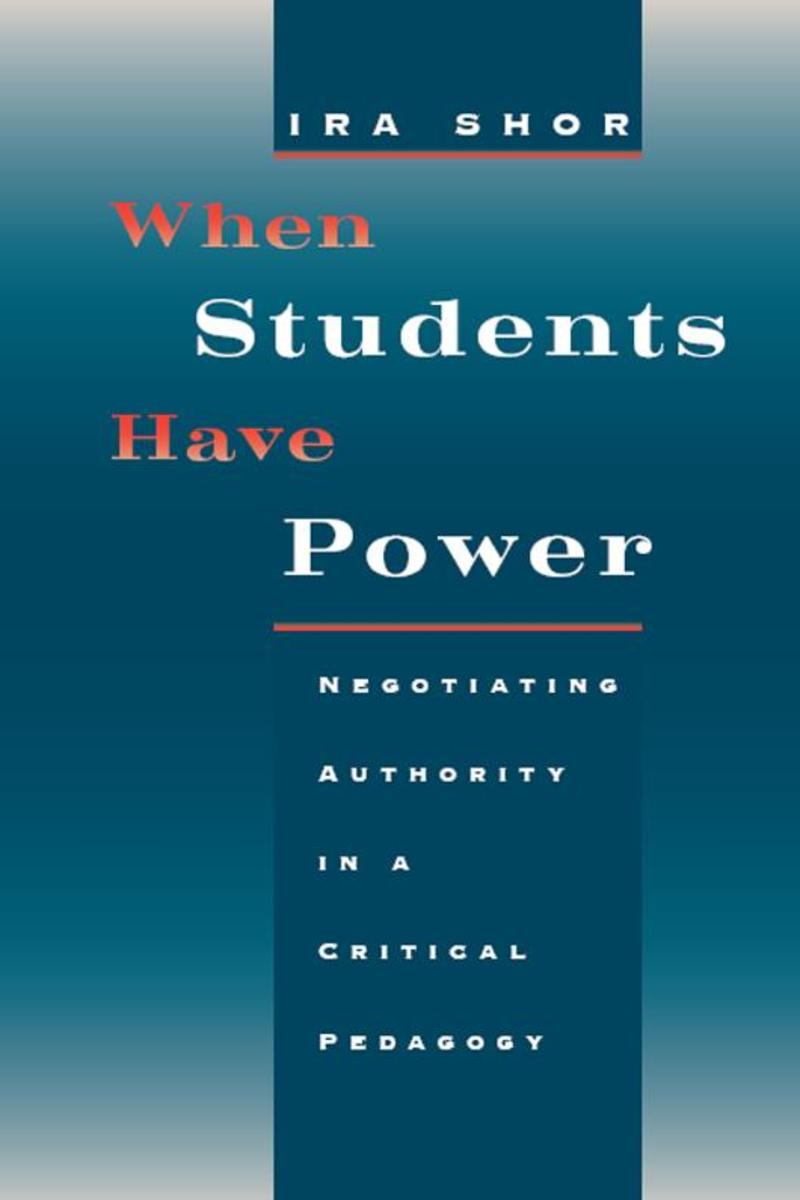
When Students Have Power
¥211.90
What happens when teachers share power with studentsIn this profound book, Ira Shor-the inventor of critical pedagogy in the United States-relates the story of an experiment that nearly went out of control.Shor provides the reader with a reenactment of one semester that shows what really can happen when one applies the theory and democratizes the classroom. This is the story of one class in which Shor tried to fully share with his students control of the curriculum and of the classroom. After twenty years of practicing critical teaching, he unexpectedly found himself faced with a student uprising that threatened the very possibility of learning. How Shor resolves these problems, while remaining true to his commitment to power-sharing and radical pedagogy, is the crux of the book. Unconventional in both form and substance, this deeply personal work weaves together student voices and thick de*ions of classroom experience with pedagogical theory to illuminate the power relations that must be negotiated if true learning is to take place.




 购物车
购物车 个人中心
个人中心



